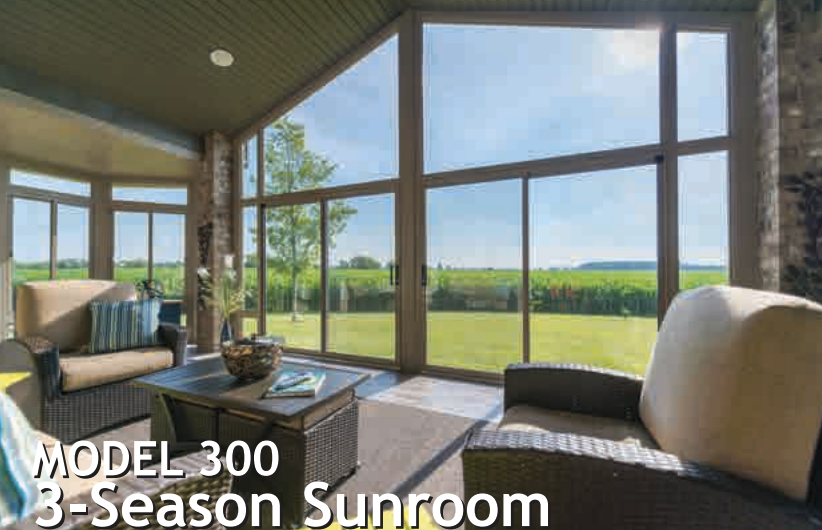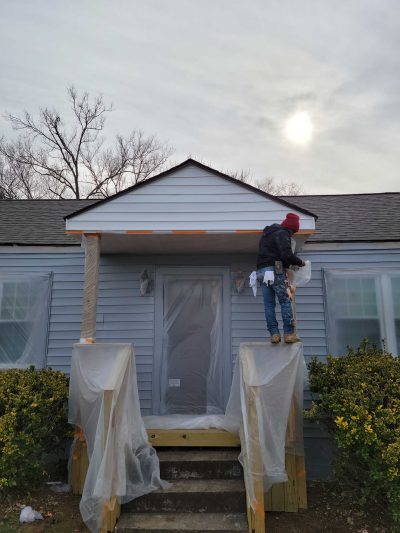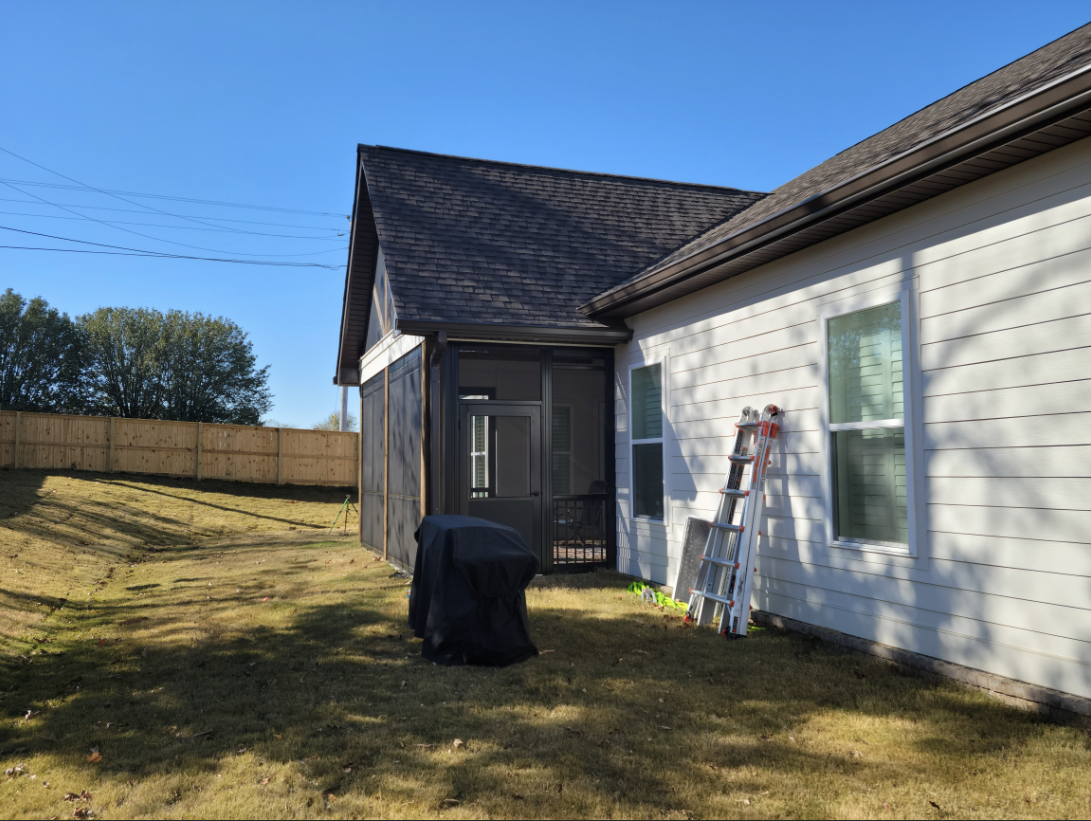Enjoy the Benefits of a Screened Porch Addition
A screened porch is one of the most versatile and stylish additions you can make to your home. It provides a perfect space to enjoy the outdoors while being shielded from insects, rain, and harsh sunlight.
Whether you want to relax with a good book, entertain guests, or create a serene family retreat, a screened porch can transform your home and your lifestyle. However, before embarking on this project, it’s important to carefully plan and consider all aspects of the addition to ensure it meets your needs and expectations.
In this blog, we’ll walk you through a comprehensive checklist to help you design a functional and stylish screened porch. By addressing these factors, you’ll be well-equipped to create a space that blends seamlessly with your home and enhances your outdoor living experience.
Determine Your Purpose for the Screened Porch
The first step in planning your screened porch is to identify how you intend to use the space. This will guide your decisions about size, layout, and design features. Common uses for a screened porch include:
- Relaxation Zone: A quiet space to unwind, read, or meditate.
- Entertainment Area: A space for hosting friends and family, complete with seating and dining options.
- Outdoor Dining: A designated area for enjoying meals while taking in the fresh air.
- Children’s Playroom: A safe, enclosed area where kids can play without exposure to insects or extreme weather.
- Pet-Friendly Space: A secure spot for pets to enjoy the outdoors without risk of escape.
Consider how these functions might evolve over time. For example, a playroom for young children can transition into an entertainment area as they grow. Flexibility in planning ensures your porch remains useful for years to come.
Assess Your Available Space
Take a close look at the area where you plan to add your screened porch. Consider the following factors:
- Size and Shape: How much space is available, and what dimensions will work best? Think about how the porch will integrate with your existing home layout.
- Orientation: Which direction will your porch face? South-facing porches will get more sunlight, while north-facing porches may stay cooler and shaded. East-facing porches catch morning sun, making them ideal for breakfast spaces, while west-facing ones capture evening light, perfect for sunset views.
- Access Points: Plan for entryways to and from your home, garden, or yard. Ensure easy traffic flow between spaces. Consider double-door options for larger items like furniture or equipment.

Conducting a thorough assessment of your available space will help you visualize how the screened porch will fit into your home’s overall design.
Choose the Right Materials
The materials you select for your screened porch will have a significant impact on its durability, aesthetics, and maintenance requirements. Key considerations include:
- Flooring: Options include hardwood, composite decking, concrete, or tile. Choose materials that are durable, weather-resistant, and complementary to your home’s design. For added comfort, consider radiant heating for the floor to keep it warm during colder months.
- Screens: High-quality screens are essential for keeping insects out while maintaining good visibility and airflow. Consider options like fiberglass, aluminum, or polyester screens, which vary in strength and appearance. Specialty screens, such as solar screens, can reduce heat and glare, adding to the comfort of your space.
- Framing: Wood, aluminum, and vinyl are popular framing materials. Wood offers a classic look but requires regular maintenance, while aluminum and vinyl are more durable and low-maintenance. Powder-coated aluminum combines durability with a sleek finish for a modern aesthetic.
Selecting the right materials will ensure your screened porch remains functional and attractive for years to come.
Incorporate Climate Considerations
Your local climate will play a significant role in the design of your screened porch. For example:
- Hot Climates: Include features like ceiling fans, insulated roofing, and UV-resistant screens to keep the space cool and comfortable. Reflective roof coatings can also reduce heat buildup.
- Cold Climates: Consider adding a fireplace or heaters to extend the usability of your porch into the colder months. Portable or built-in heating units can create a cozy atmosphere without compromising design.
- Rainy Regions: Opt for weatherproof materials and ensure the roof has adequate drainage to prevent water buildup. A pitched roof with gutters can direct rain away effectively.
Designing your porch to accommodate your climate will enhance its usability and ensure your comfort throughout the year. Additionally, weatherproof curtains or shades can provide extra protection from wind or heavy rain when needed.
Focus on Lighting and Electrical Needs
Lighting is a key element of any screened porch design. Plan for a combination of natural and artificial lighting to create a welcoming atmosphere. Consider:
- Ambient Lighting: Install overhead fixtures, string lights, or wall sconces to provide general illumination. Lantern-style lighting can add a touch of charm and blend seamlessly with a rustic or traditional design.
- Task Lighting: Add focused lighting for reading, dining, or other activities. Adjustable or directional lamps can offer flexibility in lighting levels.
- Electrical Outlets: Ensure there are enough outlets for devices like fans, heaters, or charging stations. Weatherproof outlets are essential for safety and durability in outdoor conditions.
Proper lighting and electrical planning will make your screened porch a comfortable and functional space, day or night. Solar-powered lighting is an eco-friendly option for outdoor spaces and reduces long-term energy costs.
Plan Your Furniture and Layout
The furniture you choose will determine the comfort and functionality of your screened porch. When planning your layout, think about:
- Seating: Include comfortable chairs, sofas, or benches that suit your intended use of the space. Modular seating can be rearranged to accommodate different occasions.
- Dining Area: If you plan to use your porch for meals, include a dining table and chairs. Foldable furniture offers versatility for smaller porches.
- Storage: Incorporate storage solutions for cushions, blankets, or outdoor games to keep the space organized. Built-in storage benches can double as seating.
Arrange your furniture to maximize space and maintain clear pathways for easy movement. Rugs and mats can define areas within the porch and add a cozy feel.
Blend Style with Functionality
A stylish screened porch can elevate your home’s overall aesthetic. Choose design elements that complement your home’s architecture and reflect your personal taste. Consider:
- Color Scheme: Select colors that harmonize with your home’s exterior. Neutral tones create a timeless look, while pops of color can add personality.
- Decor: Add rugs, throw pillows, and curtains for a cozy and inviting atmosphere. Seasonal decor can refresh the space throughout the year.
- Natural Elements: Incorporate potted plants, hanging baskets, or a vertical garden to bring the outdoors inside. Adding water features like a small fountain can enhance tranquility.
Balancing style with functionality will create a space that’s both beautiful and practical.
Budget and Costs
Adding a screened porch is an investment, so it’s essential to establish a realistic budget. Consider:
- Material Costs: Prices for flooring, screens, and framing materials can vary widely. High-end materials like composite decking and solar screens may require a larger upfront investment but offer long-term durability.
- Labor Costs: Factor in the cost of hiring professionals for design and construction. Professionals can also help identify cost-saving options without compromising quality.
- Additional Features: Budget for extras like lighting, furniture, or heating systems. Custom features like built-in seating or a sound system can elevate the space further.
By setting a clear budget, you can prioritize your spending and avoid unexpected expenses. Don’t forget to allocate funds for routine maintenance to ensure the porch remains in top condition.
Address Building Codes and Permits
Before starting construction, check your local building codes and regulations. This may include:
- Permits: Determine whether you need a permit for your screened porch. Permits may vary based on the size and scope of the project.
- Setbacks: Ensure your porch complies with property line setback requirements. Verify these with local authorities to avoid costly revisions.
- Inspections: Be prepared for inspections during and after construction to ensure compliance. Proper documentation can expedite the approval process.
Working within legal guidelines will prevent delays and ensure your project goes smoothly. Consulting with a contractor familiar with local regulations can save time and effort.
Work with Experienced Professionals
While it’s possible to tackle a screened porch as a DIY project, working with experienced professionals can save you time, stress, and money. Professionals can:
- Help you design a porch that meets your needs and complements your home.
- Ensure the construction is safe, durable, and compliant with building codes.
- Provide expert advice on materials, layout, and features. Contractors can also recommend design options you may not have considered.
Collaborating with a reputable contractor will ensure your screened porch is built to the highest standards. Look for professionals with strong references and portfolios of past work.
Create Your Vision with a Screened Porch Addition
A screened porch is a wonderful addition to any home, offering a comfortable and stylish space to enjoy the outdoors. By carefully considering the purpose, materials, design, and budget, you can create a screened porch that meets your needs and enhances your lifestyle. Whether you envision a serene retreat or a lively entertainment area, thoughtful planning will help you bring your vision to life.
Ready to start your screened porch project? Contact RVM Development today for expert guidance and quality construction. Let us help you create a space that you and your family will enjoy for years to come.
Our Products are DIY Friendly!
Would you prefer to do it yourself? We can help with that, too! Our manufacturer’s provide DIY friendly products, and we’re happy to provide the guidance and assistance needed for you to install them on your own.
Get Your Free DIY Estimate
Call, or click below to request an estimate. Be sure to mention promo code “DIY-RVM”
Benefits of Updating Your Home’s Siding in Chattanooga, TN
Upgrading your siding offers numerous advantages for Chattanooga homeowners:
- Enhanced Curb Appeal: New siding transforms your home’s exterior, making it more attractive to neighbors and potential buyers.
- Increased Property Value: Quality siding boosts your home’s resale value, especially when using premium materials like fiber cement or brick veneer.
- Improved Energy Efficiency: Insulated siding helps regulate indoor temperatures, reducing your reliance on heating and cooling systems.
- Protection Against the Elements: Durable siding materials shield your home from Chattanooga’s humid climate and unpredictable storms.
Exploring Sustainable Siding Options
As sustainability becomes a priority for many homeowners, it’s worth exploring eco-friendly siding materials that reduce your environmental impact without compromising performance.
- Reclaimed Wood: Using reclaimed wood siding provides a rustic, authentic look while repurposing materials that would otherwise go to waste. Proper treatment ensures it’s resistant to pests and weather.
- Recycled Metal: Metal siding made from recycled aluminum or steel is highly durable and recyclable at the end of its life, making it an environmentally responsible choice.
- Fiber Cement: Some brands of fiber cement siding incorporate sustainable practices in their manufacturing processes, making this material an eco-conscious option.
- Insulated Vinyl: Insulated vinyl siding can improve energy efficiency, reducing your home’s carbon footprint over time.
By choosing sustainable materials, Chattanooga homeowners can contribute to a greener future while enjoying the benefits of modern siding.
How to Maintain Your Siding for Longevity
Regular maintenance is essential to keep your siding looking and performing its best. Here are some tips for maintaining different types of siding:
- Vinyl Siding: Clean annually with a mild detergent and water to remove dirt and prevent mildew buildup. Avoid using abrasive tools that can scratch the surface.
- Fiber Cement: Inspect for cracks or chips and touch up paint as needed to maintain its appearance. Clean with a garden hose or soft brush.
- Wood Siding: Repaint or restain every few years to protect against moisture and UV damage. Check for signs of rot or insect activity regularly.
- Metal Siding: Wash with water and a gentle cleanser to remove grime. Address dents or scratches promptly to prevent rust.
By following these maintenance practices, you can extend the lifespan of your siding and protect your investment for years to come.
Make the Right Choice
Choosing the perfect siding material for your home is a significant decision that impacts its appearance, durability, and energy efficiency. By considering factors like climate, maintenance, budget, and aesthetics, you can select a siding option that suits your needs and enhances your home’s value.
In Chattanooga, TN, where weather conditions demand durable and moisture-resistant materials, options like vinyl, fiber cement, and brick veneer are ideal choices. Partnering with an experienced contractor ensures a seamless installation process and long-lasting results.
Ready to update your home’s siding in Chattanooga, TN? Contact RVM Development for expert guidance and professional installation. Let us help you transform your home with siding that combines style, durability, and functionality.





